The Dragonflies at El Rio
On this walk I mostly ignored the birds (other than those Great Blue Herons!!)
One of the first dragonflies we saw is also one of the most common and widely spread dragonflies in the United States. The Blue Dasher is about 1-1½ inches long with blue-green eyes and a white face. Its abdomen is light blue and covered in a chalky, frosted look (described as pruinose).
Between the dragonfly's head and its abdomen is its thorax. That thick body part houses the big muscles required to power the dragonfly's flight. The wings and legs are attached to the thorax.
The dragonfly below is a female Blue Dasher. Note that the eye color is turning the blue/green of the adult and it has a white face, but its abdomen is differently colored.
This is another dragonfly which could be mistaken for a Blue Dasher with its blue abdomen but look closely. This is a Western Pondhawk. The eyes are a dark blue/gray and not greenish as the Blue Dasher has. The face is green unlike the white of the Blue Dasher. The Pondhawk's body is a pruinose (chalky) blue, similar to that of the Blue Dasher. To me, the abdomen looks a bit darker than the Dasher's does.
The female Western Pondhawk has a green thorax and the first sections of its abdomen are green with the abdomen fading to a yellow or golden color towards the back. Have you noticed that the dragonflies perch with their wings to the side, perpendicular to their bodies?
This insect below perches with its wings held alongside its very slender body, and has a space between its eyes. This is a damselfly, a 'cousin' to the dragonfly family. Both damselflies and dragonflies are in the Odonata order of flying predatory insects. The damselfly below is a Rambur's Forktail. While it is over an inch long, like other damselflies it is so much more slender and delicate looking compared to dragonflies. It is easy to overlook damselflies when walking alongside a pond due to their tiny body size.
There were a number of Black Saddlebags flying around El Rio, but that species never seems to land anywhere. They spend most of their time flying. We did see a number of pairs of Black Saddlebags in the tandem flight of their mating behavior. As they flew along, periodically the male would release the female who would dip the tip of her body into the water, releasing eggs. The two dragonflies would quickly reattach and fly around until they found another suitable site to release eggs, repeating the process over and over again. Dragonflies lay their eggs in water because their larvae are completely aquatic and require water to survive and grow.
Curious about how the Saddlebag dragonfly got its name? I have yet to get a good photo of a Black Saddlebag but I did capture this photo of a Red Saddlebag Dragonfly some years ago. You can see the "saddlebags" on it wings.
For guided walks led by the Marana Parks and Recreation Department, check here.
The Sonoran Institute holds an annual Dragonfly Festival along the Santa Cruz River every September. For information and to sign up for this year’s events, check out this year's schedule.


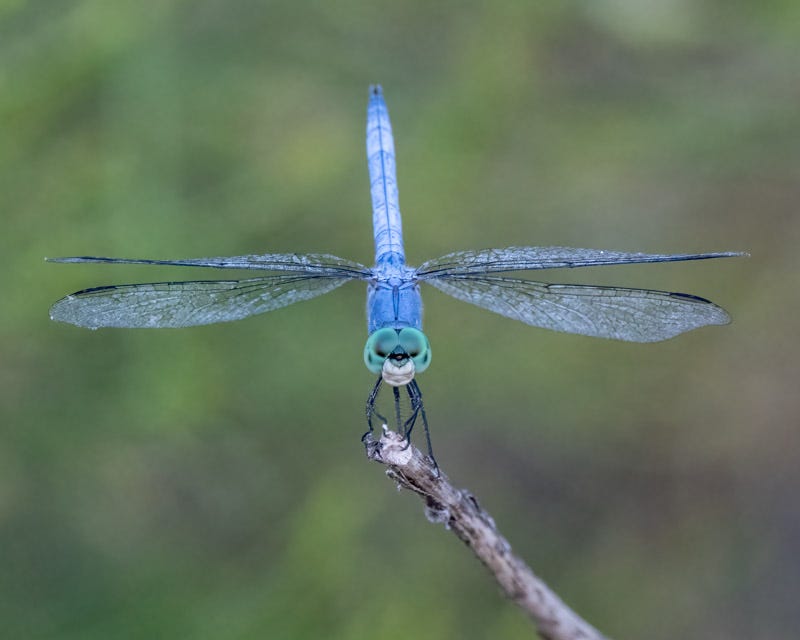

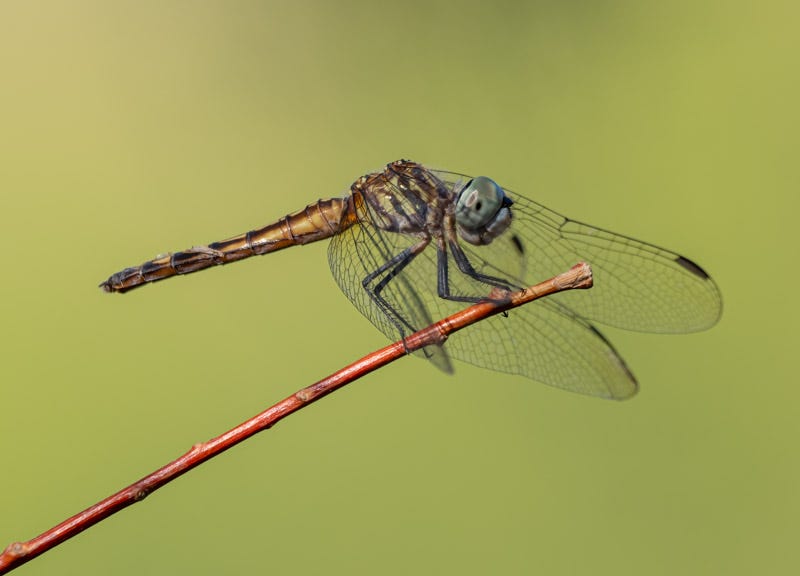
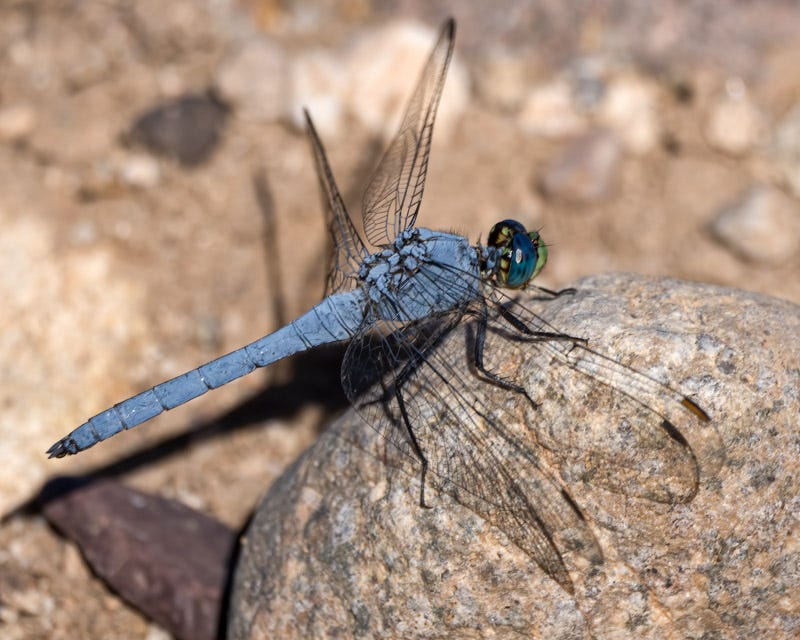

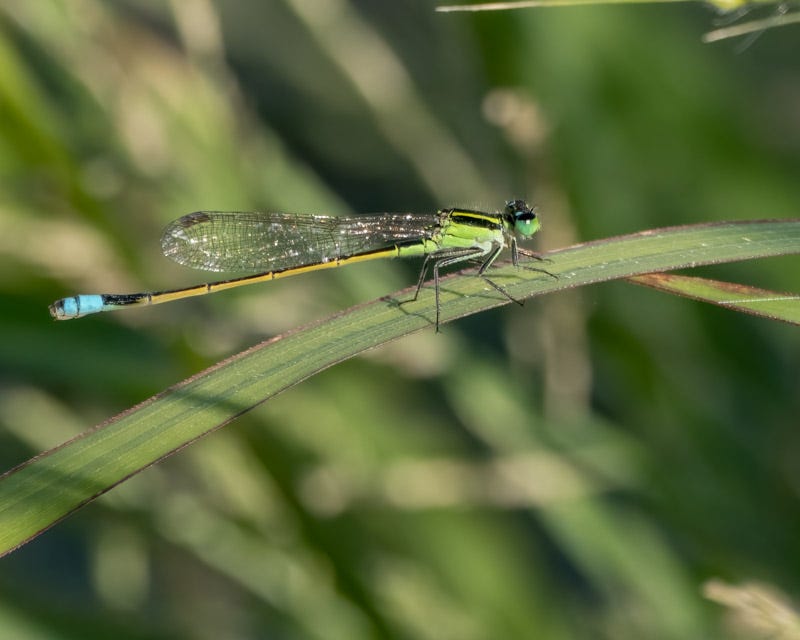
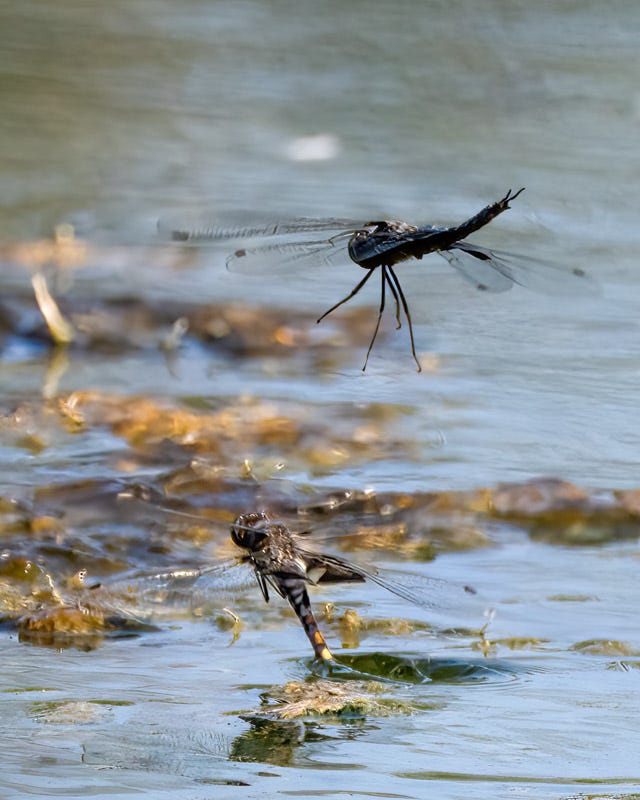
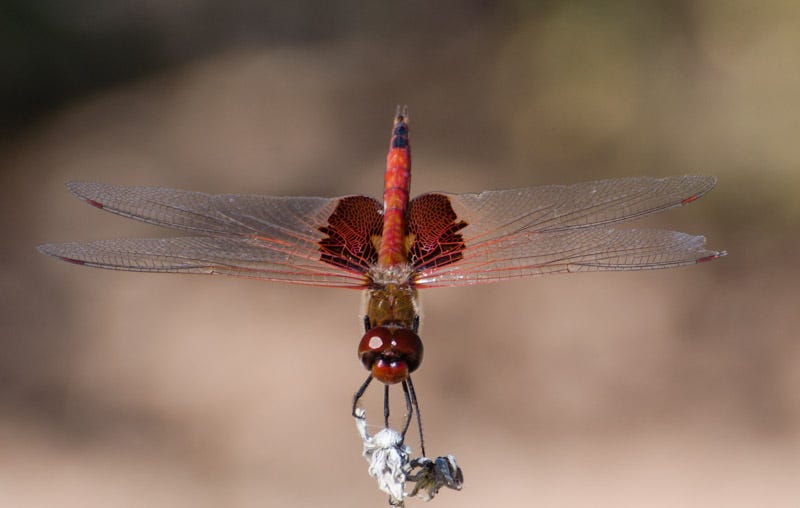
Great shots. Especially like the gorgeous colors of that first heads-on shot of the Blue Dasher, but they're all beautiful and well-documented, as usual. I'm sure Steve is right about the drought effect; sure wish we could send some rain your way!
Gorgeous photos. Congrats on the Saddlebags photo; that was a difficult one to get.